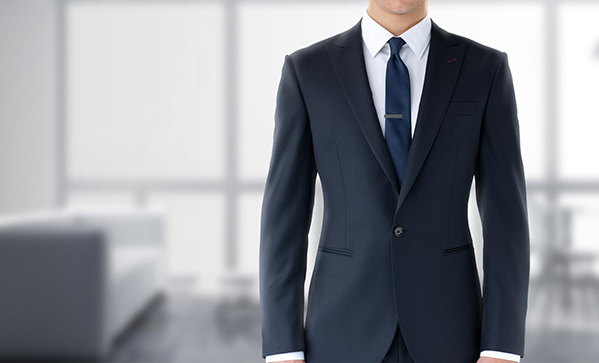Whether it’s for your job, your cousin’s wedding, or evenings at fine dining establishments, a good suit is a staple of the dapper gentleman’s wardrobe.
But when you wear a suit, it needs to fit properly. Take a close inspection in the mirror and look for the following things; you might be surprised to find out that a few alterations must be made. If you do need to see your tailor, bear in mind there are limits to what they can do. When buying a suit, its best to choose one that comes as close to the perfect fit as possible. Your suit should fit your natural stance, which is when you stand straight with your arms resting at your sides.
Here’s the rundown of what to look for in the perfect fit.
The Collar
The collar of your suit jacket should rest against the collar of your dress shirt. If the collar is too loose it will hang back and there will be a gap. If it’s too tight there will be bunching and folding on the back of your shoulders. Look at yourself in the mirror sideways to determine if you’ve got it right. This is difficult for a tailor to alter so it’s best to get a jacket that has a good original fit.
The Shoulder
The shoulder of your suit jacket should lie flat. To get this look, the sleeve should meet the shoulder at the point where your arm meets your shoulder. If the shoulder is too long or short, it will create ripples or bunches which look sloppy. Shoulder divots, (when there is an indent below the shoulder seam so the sleeve dips in a little bit), are a major suit faux pas indicating poor fit. This can be altered, but is one of the more difficult fixes that a tailor can perform.
The Jacket Closure
The jacket should be snug, but not so tight that it feels like its squeezing your chest. It also should not be so loose that it seems to hang off your body. A good test is to fasten the middle button on a three button jacket, or the top button on a two button jacket, and slip your hand underneath the lapel. If your flat hand fits comfortably against your body it’s a good fit. If you can fit a clenched fist in there, it’s too big. A tight jacket will create the dreaded X-shaped button strain that creates ruffles and wrinkles making it look like you’re about to explode. A tailor can let out or take in a jacket, but only to a limited degree. Too much will make the pockets look out of place.
The Sleeve Length
The general rule for sleeve length is that a quarter to a half-inch of the cuff of your dress shirt should be visible in your natural stance. If the sleeve is too long you won’t see any shirt cuff, and if it’s too short you’ll see too much. Sleeve length, however, is easy to adjust.
The Jacket Length
The length of your jacket should come down to cover the top curve of your butt. Generally speaking, this works out to being around the middle of your hand when you’re in natural stance. A tailor can adjust this, but too much will make the pockets look out of place.
The Trouser Waistline
Your pants should fit snug around the waist; tight enough so you don’t need a belt to keep them up, but not so tight that they make your back ache after a couple hours. You will, of course, still wear a belt to add a touch of style.
The Trouser Seat
The seat of your pants should drape around the bottom of your posterior and lie flat. If it’s too tight you’ll get wedgies all the time—and we all know how annoying those are. If it’s too loose it will sag around the backs of your thighs. A tailor can fix this as well, but changing it too much will make the pockets look out of place. Notice a theme? That’s more incentive to get a proper fit when you buy the suit—better yet, buy bespoke.
The Trouser Break
This refers to where your pants are hemmed. The cuff of your trousers should rest on the top of your shoe. It can be longer at the back, but should not come down below the heel. If the trouser is too short you’ll expose your ankles, and if they are too long there will be bunching which looks dumpy and can make you appear shorter. This is the easiest thing for a tailor to fix.
The Accessories
While a suit can seem like a bit sterile and boring at first, you can always jazz it up with a few extras. Pocket squares, watches, belts, neckties, bowties, and two-tone shoes can all add a little extra style and distinction to the ensemble.
Now don your favorite suit, assume your natural stance, and take a look in the mirror. How does it fit?
————
Chris Riddell is a freelance writer from Toronto who covers art, business, and urban life for various fine publications. Also a poet and aspiring novelist, he’s busting his butt trying to get his name into a few literary magazines these days. He encourages you to check out his website for a look at what he’s been working on lately.


